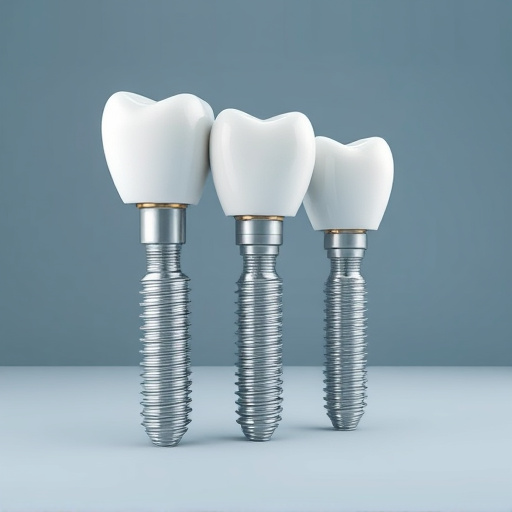Uncovering Dental Restoration Services: Common Procedures and Expert Guidance
Dental restoration services are essential for maintaining optimal oral health, encompassing various…….
Dental restoration services represent a pivotal aspect of modern dentistry, offering advanced solutions to repair, replace, and rejuvenate dentition. These services encompass a broad range of treatments aimed at restoring oral function, aesthetics, and overall health, catering to individuals with various dental needs. In this comprehensive article, we will embark on a journey through the world of dental restoration, exploring its historical foundations, global reach, economic impact, technological innovations, regulatory framework, challenges, successful case studies, and an insightful look into its future trajectory. By delving into these aspects, readers will gain valuable insights into how dental restoration services are transforming oral care practices worldwide.
Dental restoration services involve a suite of procedures designed to address structural damage or decay in teeth and the supporting structures, such as gums and jawbones. The primary objectives include restoring proper chewing function, improving aesthetics, and preventing further deterioration. Historically, dental restorations have evolved from simple fillings and extractions to complex surgical interventions and aesthetic enhancements.
Dental restoration services have a profound global impact, with significant variations in accessibility and quality across different regions. The World Health Organization (WHO) estimates that over 3.5 billion people worldwide lack access to oral health care, emphasizing the critical need for robust dental restoration services.
The economic landscape of dental restoration services is dynamic and multi-faceted, influenced by market forces, healthcare policies, and consumer preferences.
Technological breakthroughs have revolutionized dental restoration services, improving precision, efficiency, and patient outcomes.
Dental restoration services are subject to stringent regulations and policies that vary across jurisdictions, ensuring quality, safety, and ethical practices in dentistry.
Despite significant advancements, dental restoration services face several challenges and criticisms that require strategic solutions.
The following case studies highlight successful applications of dental restoration services and provide valuable insights into their impact.
Patient Profile: A 14-year-old female patient presented with a history of dental caries and a desire for an aesthetically pleasing smile. She had previously received several fillings but was concerned about the long-term health and appearance of her teeth.
Treatment Plan: The dentist recommended a comprehensive approach, including:
Outcome: The patient’s smile was transformed, regaining its natural beauty and functionality. The use of CAD/CAM technology ensured precise, long-lasting crowns, and orthodontic intervention facilitated better oral hygiene and a confident smile.
Background: A private dental clinic in a major metropolitan area aimed to expand its services to cater to the growing demand for implant dentistry.
Strategy: The clinic invested in state-of-the-art equipment, including 3D imaging and CAD/CAM systems, to offer a full range of implant services, from surgical placement to final restoration. They also implemented a comprehensive training program for their team to stay abreast of the latest techniques.
Results: Within two years, the clinic saw a 35% increase in patients seeking implant solutions, with high patient satisfaction rates. The advanced technologies enabled them to provide precise, personalized treatments, attracting a diverse patient base from across the city.
Initiative: A non-profit organization launched a community dental restoration program in a low-income neighborhood with limited access to oral health care.
Approach: The program involved mobile dental units, community outreach events, and partnerships with local schools to provide free or low-cost restorative services, preventive care, and educational programs.
Impact: Over a three-year period, the initiative successfully treated over 5000 patients, filling cavities, providing extractions, and offering oral cancer screenings. The program’s holistic approach improved oral health outcomes and raised awareness about the importance of regular dental checkups.
The field of dental restoration services is poised for further growth and transformation, driven by emerging trends and innovative technologies.
Dental restoration services have evolved into a dynamic and essential component of modern dentistry, offering hope and healing to millions worldwide. The global impact of these services underscores the critical role they play in improving oral health, enhancing quality of life, and fostering overall well-being. As technology advances and healthcare systems evolve, dental restoration will continue to adapt and innovate, ensuring better access, improved outcomes, and enhanced patient experiences.
Q: How do I know if I need dental restoration services?
A: If you experience tooth pain, sensitivity, bleeding gums, or difficulty chewing, it may indicate a need for restorative care. Regular dental checkups can help identify early signs of decay or gum disease, allowing for prompt treatment.
Q: Are dental restoration procedures painful?
A: Modern dentistry employs various techniques to minimize discomfort during and after procedures. Local anesthetics are commonly used, and advanced technologies like laser dentistry and computer-aided systems enhance precision and patient comfort.
Q: How long do dental restorations last?
A: The lifespan of dental restorations varies depending on the type of treatment and individual oral hygiene practices. For example, fillings may last 5-10 years, while crowns and bridges can endure for 15 years or more with proper care. Implants generally have a long-term success rate when placed by experienced professionals.
Q: Are dental restoration services expensive?
A: The cost of restorative treatments varies widely depending on the procedure, location, and dental facility. Many factors influence pricing, including materials used, technology employed, and local economic conditions. However, many countries have public healthcare systems or insurance plans that cover a portion or all of these services.
Q: Can I find dental restoration services in my rural area?
A: While access to dental care in rural areas can be challenging, mobile dental units, community clinics, and telemedicine services are expanding opportunities for restorative treatments in underserved regions. It’s advisable to check with local healthcare providers or public health departments for available resources.

Dental restoration services are essential for maintaining optimal oral health, encompassing various…….

Dental restoration services transform smiles after tooth loss or trauma, offering various solutions…….